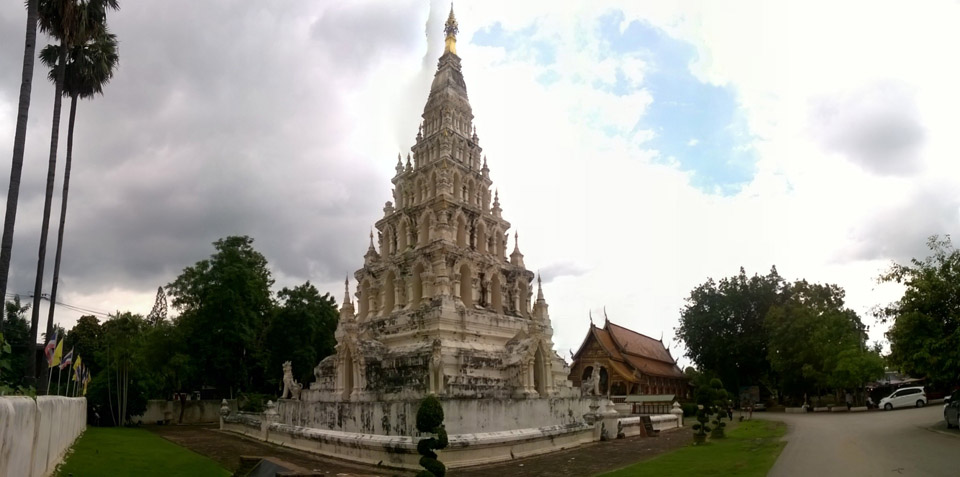Wat Chedi-Liem
- Veng KhumKam rd., Nong Hoi, Muang DistrictChiangmai 50000
- 053-140-322
-
- Every Day 06:00-18:00
- https://www.facebook.com/WiangkumkamInformationCen...
- #temple #wat #ruin #wiang kum kan #ancient remains
-
GPS : 18.7540000, 98.9956700 (Open Google Map) | Turn on your location
History
Wat Chedi-Liem is formerly known as ‘Wat Ku Kham’. Historical evidence indicates that the original temple name “Ku-Kham”, which literally means the golden stupa, is derived from the most significant structure within the temple, the main stupa. Chedi-liem or Ku Kham, the main stupa of the temple, was established in 1288 AD under the order of King Mhangrai, the first ruler of the Lanna Kingdom. The architectural structure of Chedi-Liem evidently demonstrates the influence of Haripunchai culture, as the construction resemble the square-based pyramidal stupa located at Wat Jamathewi in Lamphun, known as Ku Kud (literally means the missing finial stupa). However, the outer decoration including the Buddha images in the niches clearly indicates the influence of Burmese art. This mixture of architectural styles is a consequence from the most recent reconstruction, patroned by the wealthy Burmese timber merchant.
Therefore, the significance of Wat Chedi-Liem is, it was under the royal patronage in the reign of King Mhangrai. Besides, it is also the tangible evidence of the transmission of Haripunchai culture into the Lanna Kingdom.
Location
Wat Chedi-Liem is located southeast of Chiang Mai, 5 kilometers away from the city center. It is located in the Tha-Wang-Tarn District. Some temple components, including the main stupa, viharn (main hall) and ubosot (congregation hall), have been registered as national ancient monuments. River Ping is located to the west of the temple and it is surrounded by scattered residential and commercial areas. Wat Chedi-Liem is in the northwest sector of Wiang Kum Kam with some other temples nearby: Wat Phya Mhangrai and Wat That Khao.
Temple layout
The temple faces east like other Lanna temples. Some major components include the main stupa (Chedi liem) and viharn (main hall), which lie on the same axis, ubosot (congregation hall), the monk residents, and the kitchen. These components are enclosed within the temple wall with two entrances at the front and the back of the temple.
Architecture
The main stupa is a construction that represents the influence of Haripunchai art over the Lanna Kingdom at its early stage. It is a plastered, square-based, five tier, pyramidal stupa, which clearly shows the resemblance to Ku Kud, a Haripunchai stupa in Lamphun province. Each tier contains three niches on each side, which adds up to sixty niches of Buddha images around the stupa. There are Singhas (mythical lions) at the four corners of the temple. The niches containing sitting Buddha images of Burmese-Bagan style are placed at the middle of each side. The floral stucco bas-relief shows the connection to Burmese school of art.
